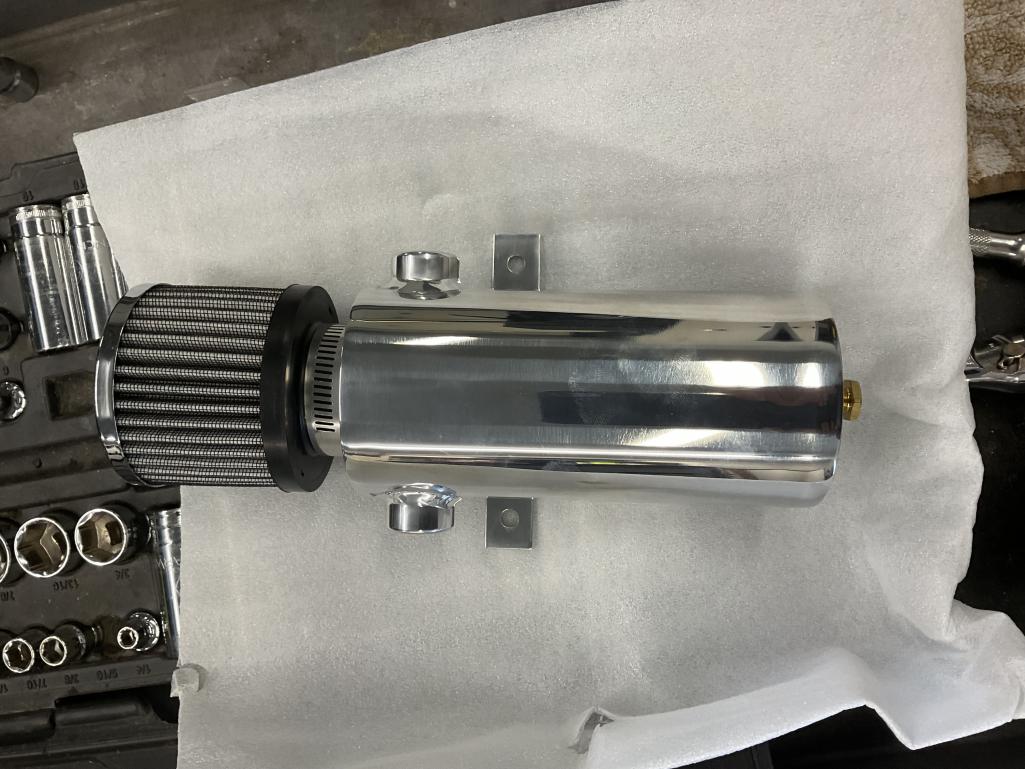|
|

|
Porsche, and the Porsche crest are registered trademarks of Dr. Ing. h.c. F. Porsche AG.
This site is not affiliated with Porsche in any way. Its only purpose is to provide an online forum for car enthusiasts. All other trademarks are property of their respective owners. |
|
|
| Wew |
 Dec 31 2023, 02:14 AM Dec 31 2023, 02:14 AM
Post
#1
|
|
Member   Group: Members Posts: 236 Joined: 17-January 15 From: Novato, ca Member No.: 18,335 Region Association: None |
Hi all
Engine is a 1973 2.0 with a 2056 build. I purchased a cam that was more aggressive for spirited driving no track and just large enough to maintain the car running fuel injection DJet. New heads with no vents. purchased the oil tower and air box for a 1975/76 as the bigger breather opening was recommended. I am still experiencing some oil leaks one that sits at the base of the head near the number 4 spark plug. Plug is not leaking. Also some oil on the thermostat spring mechanism. Valve covers have had inner lip welded and 914 rubber cork gaskets. I bought this canister to help with the pressure and hopefully remedy the oil leaks.  I have been unable to find an example of how to route the hoses for this when installed. Any advice or pointing me in the right direction would be appreciated. |
Posts in this topic
 Wew Too much pressure? Dec 31 2023, 02:14 AM
Wew Too much pressure? Dec 31 2023, 02:14 AM
 mate914
Hi all
Engine is a 1973 2.0 with a 2056 build. I ... Dec 31 2023, 07:32 AM
mate914
Hi all
Engine is a 1973 2.0 with a 2056 build. I ... Dec 31 2023, 07:32 AM

 Wew Just splice the line of the big breather hose betw... Dec 31 2023, 11:48 AM
Wew Just splice the line of the big breather hose betw... Dec 31 2023, 11:48 AM
 r_towle no vents on the heads may be a bit optimistic.
Lot... Dec 31 2023, 12:28 PM
r_towle no vents on the heads may be a bit optimistic.
Lot... Dec 31 2023, 12:28 PM
 technicalninja Not enough info for me yet on this one to help.
H... Dec 31 2023, 12:40 PM
technicalninja Not enough info for me yet on this one to help.
H... Dec 31 2023, 12:40 PM
 technicalninja
no vents on the heads may be a bit optimistic.
Lo... Dec 31 2023, 12:57 PM
technicalninja
no vents on the heads may be a bit optimistic.
Lo... Dec 31 2023, 12:57 PM
 Jack Standz Might find this useful (from Len Hoffman and Jake ... Dec 31 2023, 01:19 PM
Jack Standz Might find this useful (from Len Hoffman and Jake ... Dec 31 2023, 01:19 PM
 technicalninja Bingo! That's a great article!
Only o... Dec 31 2023, 01:59 PM
technicalninja Bingo! That's a great article!
Only o... Dec 31 2023, 01:59 PM
 Jack Standz Some increase the size I f the drains on the winda... Dec 31 2023, 02:08 PM
Jack Standz Some increase the size I f the drains on the winda... Dec 31 2023, 02:08 PM
 technicalninja One thing I noticed in a Raby video where he demon... Dec 31 2023, 03:42 PM
technicalninja One thing I noticed in a Raby video where he demon... Dec 31 2023, 03:42 PM
 Jack Standz Wow, good catch. I've seen that video before ... Jan 1 2024, 12:48 AM
Jack Standz Wow, good catch. I've seen that video before ... Jan 1 2024, 12:48 AM  |
1 User(s) are reading this topic (1 Guests and 0 Anonymous Users)
0 Members:

|
Lo-Fi Version | Time is now: 2nd July 2025 - 02:01 PM |
Invision Power Board
v9.1.4 © 2025 IPS, Inc.







